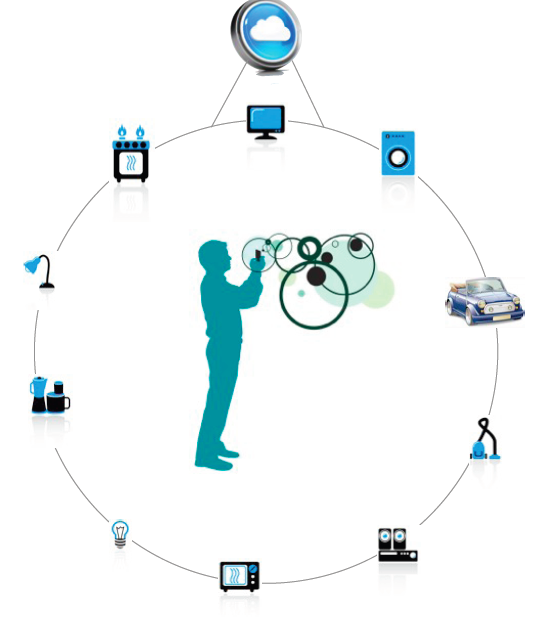Reflecting on where we are with wearables, the Internet of Things, smart homes, smart cars, smart cities, smart malls, etc., keeps opening up interesting holes in Apple’s ecosystem strategy. The more we look at how fast electronics are becoming connected, the quicker this market could get out of hand for Apple.
We start with the important observation that Apple will not make coffee pots, refrigerators, cars, light posts, dog feeders, thermometers, etc. However, they do want those devices to work with iOS. Right now they can through apps. The problem is, all these apps offer walled garden experiences. My thermostat app does not connect to my smart bed in order to adjust the temperature of my room depending on my current body temperature, for example. More importantly, the company that makes my smart bed and my thermostat are likely not to be the same company. Therefore, there needs to be a way for them to work together. What I am outlining is the case that the Internet of Things needs to be open. More specifically, built on open standards. This is, in my opinion, the only way the Internet of Things will move forward meaningfully.
What will be fascinating to watch is how Apple will insert itself in the middle of this. I’ve championed a “best with iOS” strategy I think is part of how they can address this issue. Apple has a hardware accessory program called “MFI” that allows third party hardware companies to make accessories that work with Apple’s proprietary ports like the Lightning connector for iPad and iPhone. Where IoT will differ is these devices will not connect to the iPhone or iPad with a physical cable but rather via an open standard like Bluetooth LE, WiFi, or something new in the future. The point is, these devices will not connect into Apple’s ecosystem with proprietary ports unique to Apple hardware. Any software platform like Android or Windows can come in and enter this new IoT ecosystem. Apple could, however, allow for unique differentiation and integration giving third parties ways to integrate into iOS in unique ways.
CarPlay I feel is an example of this to a degree. Apple is enabling automobile manufacturers to take a solution packaged for them that works uniquely with iOS. What is rumored about Apple’s smart home strategy sounds like it could be similar. Tech.pinions columnist Jan Dawson shared his thoughts on Apple and the smart home and it is worth a read.
The point worth thinking about here is how the broader connected device ecosystem will grow beyond Apple’s control. They will control computing devices that sit in the center of these connected experiences but will have to also work well, and work uniquely, with third parties as well those who will build the connected home, car, mall, city, etc.
In a very strange way, Apple competing in the Internet of Things will require the support and shared vision of many third party partners in a way they have not had to deal with before. I believe they can do this through unique hooks to iOS but we will see if this or some other path is the one they take.

“I believe they can do this through unique hooks to iOS but we will see if this or some other path is the one they take.”
Yup! The driver model (or in this case kext).
Good related article on NPR. Search With Beats, Apple Buys A Quick Start On Smart Headphones.
Very likely Apple sees Beats Music as a footnote, a clause in the agreement. Tunes, games, shows, books, apps—public content was king.
That king is dead.
What’s next? Private content. Selfies were the first hint. Our health, wealth, family, careers are the new content. Now we are the content.
The next wave in consumer tech is nearables (sensors that gather information around us) connected with farables (servers that give information context and depth), connected through hubbles that control the flow and keep info secure.
Security, confidentiality and privacy will be the next battle. Search ios security 446 gibson.
it’s awesome article. I look forward to the continuation.
This post post made me think. I will write something about this on my blog. Have a nice day!!
I absolutely love your blog and find a lot of your post’s to be exactly I’m looking
for. Do you offer guest writers to write content for you?
I wouldn’t mind composing a post or elaborating on a lot of the subjects you write in relation to here.
Again, awesome website!
Thanks for any other informative blog. The place else may I get that type of info written in such
an ideal way? I’ve a venture that I am just now working on, and I’ve been at the glance out for
such information.